Global Insights – November 2021
Our Kea Regional Directors give on-the-ground insights into what is happening in their region and the opportunities this presents for New Zealand export businesses.

CHINA
Despite the ongoing challenges presented by the pandemic China’s economy remains strong. Recently released figures show China’s GDP grew by 9.8 percent year-on-year in the first three quarters to 82.31 trillion yuan (US$12.79 trillion). The total value of China’s foreign trade import and export market in the first three quarters was 28.33 trillion yuan(US$4.4 trillion), a year-on-year increase of 22.7%, achieving positive growth for five consecutive quarters. China has now held the title of the second largest import market in the world for 11 consecutive years.
E-commerce businesses have benefited from this year’s Double 11/Singles day. More than 290,000 brands battled it out during the event, and a huge $139 billion worth of goods was sold on Alibaba and JD platforms alone. Maggie Zhu, Managing Director of Alibaba group, says the event is one of the biggest opportunities for New Zealand businesses to reach the Chinese market. Last year New Zealand was the seventh top selling nation to China during the festival, with infant formula, honey products and luxury pet treats being the most popular products.
Maggie says each year more New Zealand businesses get on board and those looking to capitalise on next year’s festival should utilise the clean, green image of Aotearoa as this is appealing to Chinese customers. Kiwi businesses’ philosophy about their products being environmentally friendly also resonates well with the Chinese consumer.
Currently China is pushing a ‘made in China’ narrative, aiming to show customers that products made in China are not second to those made in other countries. This sentiment has accelerated since Covid and is being nudged along by increasing pressure on China’s rich and famous to promote “cultural confidence”. The move represents the rising China Chic or Guochao, which is shifting preferences towards domestic brands.
As a consequence, foreign brands need to up their game, they can no longer just be on a shelf or screen and automatically expect consumers to think they are superior as they may have done a decade ago. To compete in China, foreign brands must now work harder to understand their target audience better, and adapt quicker if they are to succeed.
Ciara Liu, Kea China Regional Director

UK & EUROPE
New Zealand has featured prominently in the UK media recently with the NZ-UK FTA being agreed in principle. The next stages of the negotiations including the official signing of the agreement will bring several business sector items into focus for both Governments.
Timeline and Roadmap
The agreement in principle has been made, but there is still a long way to go before the agreement is fully signed and completed and a basket of New Zealand’s finest products exchanged with Number 10 Downing Street. Over this time NZ exporters need to focus and understand how their current cost structures in the UK and how much are you paying for tariffs and duties currently. It’s important for Kiwi business owners to understand what these tariffs and duties changes mean for their business, their customers, and their competitors and understand how they will adapt pricing, market support and spend.
How will it affect your bottom line and future planning?
The changes that will follow the FTA will further enforce the differences between the UK & Europe markets and continue to show that both markets need to be treated, planned and supported differently by exporters. With the changes to tariffs it’s a good time for businesses to revisit their market plans if they didn’t do so following Brexit. The changes brought about by the UK FTA and further FTA NZ – Europe negotiations, will also see a renewed focus on the NZ-EU FTA Agreement.
All of this will cause further considerations as to how Kiwi businesses view the market in the UK and the opportunities these agreements will create. It will also allow businesses to work out how best to capitalise on them in a time where supply chains, international travel and Covid are all causing disruptions.
Export businesses will benefit from staying in touch with customers, distribution partners and networks in-market to ensure they can implement any cost changes in a timely manner and work with offshore partners to understand the importance and opportunities that these FTA’s will offer.
Sara Fogarty, Kea UK/Europe Regional Director

North America
One of the biggest problems facing businesses in the US right now are the issues surrounding supply chain. Disruptions and hold ups are dominating the US media and are creating a domino effect around the world.
Last month US President Joe Biden declared a 90-day sprint to clear the backlog at California ports, announcing ports would work 24/7 in an effort to reduce the current bottlenecks. He also secured commitments from some of the US’s largest retail and shipping companies including Walmart, FedEx, Target, and The Home Depot, to increase the use of off-peak hours to move their goods. The Southern California ports continue to be a focal point of the supply chain crisis with an estimated 500,000 containers waiting offshore for an average of 11 days before being unloaded at the ports. The problem is being compounded by the fact that there are not enough port workers to drive and unload containers from the ships and there are also shortages around truck drivers to transport freight once it’s offloaded. Warehouses are also reaching capacity and with the holiday period upon us the whole system is stretched.
As far back as a year ago there were signs the pandemic was beginning to affect sea freight movement around the world. Containers were unloaded from vessels as the global need for PPE and other pandemic supplies prioritised general freight. As the world started to open up, the capacity to load, transport, and unload that freight at destinations created a logistics problem. Adding to the strain earlier in the year was the congestion caused when the Ever Given ship became wedged in the Suez Canal. The restrictions are beginning to affect many businesses, even big companies like Apple who recently reported a drop in profits blamed on supply chain issues. Many companies have panicked and over ordered stock which is leading to essentially an even worse scenario.
The effects of this long-term supply chain disruption will continue to impact the global flow of goods, causing increasing delays for New Zealand exporters. This disruption will continue well into 2022. Exporters are currently facing a high demand placed on airfreight as an alternative movement for goods and that is likely to continue. Unfortunately there isn’t a lot Kiwi businesses can do right now, except to continue to order well in advance, look to source goods locally where possible and make sure to plan well ahead and be prepared to be flexible.
Gary Fortune, Kea North America Regional Director

New Zealand
The big news this month for Kea’s offshore community and Kea Connect customers keen on business travel was the managed isolation period for international arrivals into New Zealand reducing from 14 days to 7 days, followed by a period of isolation at home. The self-isolation period for business travellers in the pilot was shortened to 10 days at an approved location. To support the expected resurgence of travel, Air New Zealand are looking at upping domestic flight frequency and eyeing a reboot of the direct Auckland – New York flights that were planned to launch in 2020, opening up access to Europe and the US East Coast. The Government has also announced the opening of Auckland’s border which will come into play on December 15th.
New Zealand and the UK reached an Agreement in Principle (AIP) on a free trade agreement that will remove over 97% of tariffs on exports into the UK the day the FTA enters into force. Kea Connect businesses exporting to our seventh-largest trading partner will be watching the progression of the AIP with interest, as benefits include not only tariff reductions, but also the removal of administratively burdensome and costly non-tariff barriers. The aim is to conclude the NZ-UK FTA by the end of the year.
We also recently saw New Zealand announce a revised pledge with a 50% reduction in gross 2005 emissions by 2030, this which will have a flow on impact for New Zealand businesses. The new figure is in line with the Climate Change Commission’s draft advice, but falls short of New Zealand’s fair share under the Paris Agreement. To help New Zealand meet its international obligations and achieve its target of zero carbon by 2050, the Government is also inviting New Zealanders to inform our first Emissions Reductions Plan, which will set the direction for climate action out to 2035 and has recently announced mandatory climate-related disclosures for financial institutions and listed companies.
Saya Wahrlich, Global Director, Government & Industry
HOW KEA CAN HELP YOUR BUSINESS GROW
Kea Connect
Kea Connect is a free service that will help your business grow offshore. We connect you personally with regional, sector-specific experts and peers.
Resources
Kea is here to help New Zealand businesses grow offshore. Be inspired and hear advice from businesses who have created their export path.
Jobs Portal
Looking for the right talent for your team? Reach our global Kiwi community through the Kea international job portal.

 MENU
MENU






